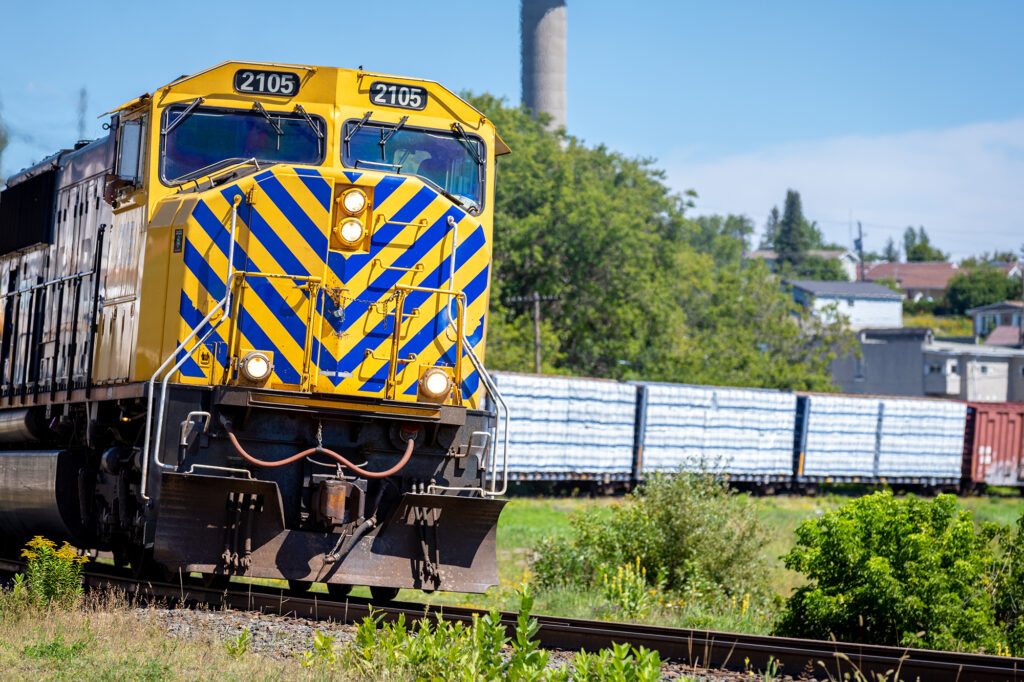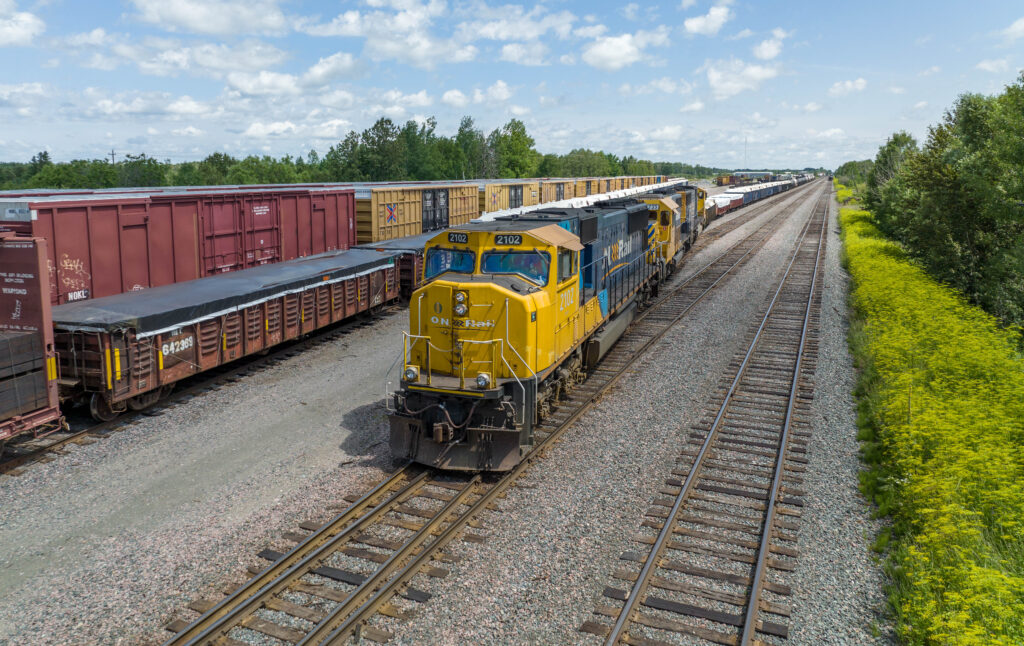SHORTLINE, BIG SUPPLY CHAIN IMPACT: Get to know Ontario Northland
Posted on
Shortlines also play a fundamental role in our supply chains. What do you see as Ontario Northland’s contribution to regional/national economies and supply chains?
Ontario Northland has been providing rail services to northeastern Ontario for over 120 years.
Shipping goods by rail freight remains an efficient and sustainable way for businesses in the North to reach global markets. This could be a connection to the North American rail network or access to ports, helping to sustain current industry and promote growth in the area. Our freight services are a reliable way for businesses and communities to ship goods, across large geographic territories in often changing weather that is ranges from extremely cold in the winter to hot temperatures in the summer.
We provide the communities we serve with vital goods, including food, medical supplies, equipment and everyday household items which is often expensive to ship to remote communities.
There’s more than one way to move goods from point A to B. Why should shippers consider rail versus other methods (e.g. trucking)?
Rail is a backbone of the transportation system in Northeastern Ontario. By connecting rail freight customers to larger markets through our connections to all Class 1 railways, Ontario Northland provides stability and growth opportunities to Northeastern Ontario’s manufacturers, mines, and farming community.
Freight remains a cost-effective way for growing businesses to ship, because as demand for product grows, rail can efficiently increase capacity to carry larger orders. In addition, Ontario Northland also delivers goods to businesses, like the delivery of mining consumables such as grinding media and fuel to northern mines.
In northern communities, where connecting highways have few alternative routes during inclement weather, shipping by rail is a safe, dependable option that helps to keep dangerous goods off the highway.
According to one of our case studies, a farm considered building their own rail line to connect to the Ontario Northland network. What are the implications of such a project? Could this become common practice for shippers across your network?
Ontario Northland continues to successfully partner with businesses to provide transportation solutions that enhance development opportunities for businesses operating in the north. In some cases, this means building infrastructure and adapting our Rail Car fleet to connect to the Ontario Northland network.
We encourage all businesses in northeastern Ontario looking to ship goods, to reach out to us as soon as possible to begin discussions on how we can assist with transportation needs. There are many ways we can contribute to an organization’s development and economic growth but allowing ample time to plan for appropriate solutions is critical.
What are the biggest opportunities facing Ontario Northland currently? What about the biggest challenges?
Northern Ontario is rich in priority economic sectors. Whether it is mining, agriculture or lumber – the world needs what Northern Ontario has and Ontario Northland is the modern, future-ready transportation system to deliver it.
Ontario Northland has always contributed to the economic development of the province and we continue to see growth and opportunity in this region. As we continue to meet the demands of the market, our challenge will be to continue to attract and develop the next generation of rail-industry leaders.
What steps is Ontario Northland taking to further make its operations efficient and climate-friendly.
Ontario Northland has hired an environmental lead, who manages a variety of portfolios, including leading the organization’s first ever environmental committee.
The recently procured trainsets for Ontario Northland’s future passenger rail service are powered by Siemens Charger locomotives, which meet the highest emission standards in market class. These new bi-directional trainsets will operate more efficiently, reducing emissions and operating costs.
Ontario Northland continues to partner with Research and Development groups to develop and test innovative solutions to enhance our industry in safety and environmental impact.
Canadian railways are the safest in North America. What kind of work goes into maintaining rigorous safety standards at Ontario Northland?
Safety is our top priority. At Ontario Northland, we prioritize education to ensure our employees are equipped to make decisions that keep themselves and those around them safe. We continue to track key performance indicators and share insights with staff on how we can make improvements to our daily operations to enhance safety. To ensure we remain compliant and safe we focus on training, personal protective equipment, finding the right tool for the right job, compliance monitoring and employee engagement to identify concerns, potential risks and corrective measures.
We continue to invest in infrastructure work that meets or exceeds industry standards, along with modernizing equipment to enhance our ability to proactively address infrastructure needs. For example, Ontario Northland recently purchased a track geometry car, which will strengthen our ability to conduct track inspection during key times of the year.
